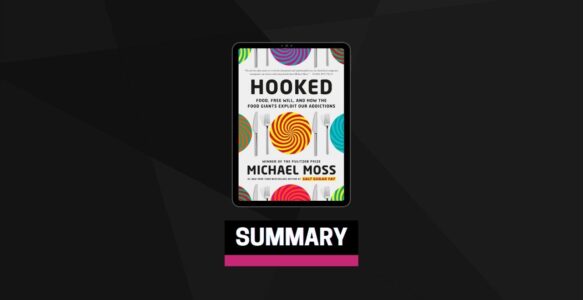Kindle | Hardcover | Audiobook
What’s Your Definition?
Little we do in life is more repetitive than eating. We eat every day, several times at least, from the day we are born. But it’s the manner in which we repetitively eat that matters in addiction. Much of processed food is designed to be consumed mindlessly, allowing us to watch TV or play video games or drive a car at the same time. We don’t even have to labor very hard in initiating a meal or snack. The most fleeting of thoughts, often subconscious, can prompt us to pause whatever we’re doing and grab something to eat. Underlying this behavior is what psychologists refer to as a conditioned response.
Conditioning is a way that we learn and increase the likelihood that we will survive. The infant is experiencing one of the first conditioned responses with food through the taste of the milk or the smell of the mother. Predicting the nutrition that it’s going to get. We don’t have to think about it.
That’s all well and good when we’re infants. But by the time we start seeking out food on our own, that conditioning is working against us. With food being everywhere, and within easy reach, we’ll reach for it again whether or not we are actually hungry, having been conditioned by the repetitive nature of that act
Whether it’s that urge we feel when we walk by a vending machine, or our conditioned response to merely seeing an advertisement for the Marlboro Man, the chief executive of Philip Morris was spot-on with his definition of addiction: “a repetitive behavior that some people find difficult to quit.” It’s a behavior that’s often mindless on our part, hidden from our own scrutiny, and guaranteed by its repetitiveness to get us to act again and again. It’s shaped by an array of influences, within us and without, that determine whether we’ll be among those some people who get in trouble. It presents itself in varied ways and degrees of arduousness in being difficult to quit.
The Variety Seekers
the sweetener known as high-fructose corn syrup rose to the top of our food concerns in the early 2000s, thanks in part to the competitive marketing by sugarcane growers that suggested their sugar is better for us. Which it isn’t, but we shunned the corn syrup anyway, and the food manufacturers responded with ease. They simply dropped the corn syrup from their formulations—and their labels—and switched to using sugar derived from sugarcane or concentrated fruit juice, or whichever kind of sugar sounded better to us. When we caught on to that, they reduced the amount of sugar they added altogether, but maintained the appeal of the product by bumping up the salt or fat. Until we started worrying about the salt or fat. And so it continues. We fret, they fiddle, and we eat more of their product.
In the end, it’s this fickleness on our part, and our appetite for information, as much as the industry’s cunning, that has fueled the processed food industry’s rise to power. We read what we want to read into the food that we want to eat, and the companies gladly cater to that.
In a sense, we’ve become unwitting allies to the processed food industry, and not just by falling for their marketing tricks. We’ve allowed them to tap into and take advantage of all of the biology we inherited from our forebears, including our love for variety and the cheapest source of calories, as well as the dramatic shifts in our work and family life that have played right into the companies’ hands. When we changed the way we ate, they changed their food to exploit that.
This is also how the chemists and engineers and marketing executives who populate the processed food industry keep from feeling too guilty about their life work. From their perspective, they argue that they didn’t invent the attributes that make their products so addictive, as much as they simply gave us what we innately want.
The Blueprint for Your DNA
Ardi and her descendants, and apes before that, have taught us much about how our appetites are shaped by evolution. But there is another critter who might help us appreciate all that can go wrong in this latest move by the industry to win back our faith in its products by tweaking our taste buds. This animal is the humble fruit fly.
Paul Breslin, the nutrition researcher, is perhaps a little biased on this, having set up a laboratory at Rutgers where he breeds and studies these flies. But, as he points out, they are spectacular models for humans because our tastes and our taste receptors are so strikingly similar. We’re both omnivores. We both love fruit. We both hail from Africa’s tropical and temperate climates. The flies even have the chemical dopamine in their brain like we do to drive their desire to eat, some very recent research has found. Oh, and these flies love sugar, not to mention beer and wine.
Knowing this, a group of researchers from Australia and Austria that included Stephen Simpson, the academic director of the Charles Perkins Centre at the University of Sydney, teamed up to take a closer look at how these flies deal with the fake sweeteners. The researchers were admittedly a little late. We were already being put to that test by the processed food industry, unwittingly. “Despite inclusion in thousands of products, and consumption by billions of people, the molecular effects of ingesting synthetically sweetened food are not well understood,” the fly researchers noted in the paper they would publish in 2016. (“It’s an elegant study,” said Nancy Rawson, the associate director and vice president of the Monell Chemical Senses Center, an independent research institution that has accepted funding from food companies, including the maker of sucralose.)
Here’s what they did: They added the most popular non-calorie sweetener, sucralose, to the food that their flies ate, a mixture of sugar and yeast. And the flies went bonkers. They couldn’t sleep. Moreover, they seemed to feel like they were starving, which caused them to eat more.
It might make us feel less concerned about our addiction to processed food to hear what happened next. Despite eating more, the flies didn’t gain weight. But the explanation for this is equally disconcerting. They didn’t gain weight, the researchers surmise, because of another change to their behavior. The poor flies couldn’t sit still. They flew around and around, for days on end, their little wings going like hummingbirds, burning up all of the extra energy they got from eating more. The flies had become hyperactive, until the sucralose dosing was stopped, when the flies regained control of their behavior.
There are limits to the conclusions we can reasonably draw from this study: Those were flies, after all, and not people. But if that added sweetener made eating better, as the industry says it is now trying to do, this test would suggest that things might be better only for the company making the additive. Or even worse, that we might go a little haywire, too, and feel starved like the flies, in which case the biggest beneficiary would be the makers of processed food.
Changing What We Value
The processed food companies know that their products, like drugs, affect some of us more than others, and thus they turn out ten thousand new items each year. But notwithstanding the caution about diets, we can make abstention work if we try to fix just one of our bad habits at a time.
Michael’s personal favorite as a first step is to stop drinking anything with calories. It just seems so logical that we’re not yet equipped by evolution to handle even fruit juice as well as we are solid food.
Some of our greatest insight into food and addiction comes from experts who started out working on drugs, and through this they’ve learned that addictions share some things. Not all of us are affected to the same degree. Our vulnerability can change over time and with our moods. The environment matters greatly. So, too, some strategies can be shared among our addictions for dealing with the constant temptation to relapse.
Take smartphones. One of the ways that they keep us hooked is through their use of vibrant color, says Tristan Harris, a former tech industry whiz kid who is now working on methods to help us control our addiction to phones. The phone manufacturers have begun promoting a dark mode that softens the colors, but there is a less-publicized trick Harris told that has a far more dramatic effect. The phones can be switched to black-and-white (in settings, then accessibility, and then display, turn on the color filters and choose grayscale). When I do this, I can almost feel the go part of my brain lose some of its oomph. The phone is much less exciting.
The processed food manufacturers use color, too, as an allure, and one of the ways we can diminish the appeal of their products is to dump the brightly colored packaging. Oreos will be less tempting when placed in a cookie jar.
We like what we eat more than we eat what we like, meaning that we can take charge of our food preferences by developing new habits. But as we now know, too, when we change what we eat, they change their products to keep us coming back to them. They’ve done this with salt, sugar, and fat, and they’ll do this again to make their products seem less addictive than they are, or, more broadly, seem like something they aren’t.
They invented vanillin to mimic vanilla because the latter creates such powerful food memories that we’ll overlook all the things that are wrong with their processed goods. But there’s a new hot flavor working its way through their chemistry labs. This flavor is older than old. It goes back to the Miocene epoch of Africa, when Ardi had access to a particular fruit whose sweetness stoked her taste buds and stroked her powers of smell to carve deep channels into her memory banks. Indeed, when her descendants began to farm, this was one of the first things they planted, we know from the fossils found in the Jordan Valley dating to 9400 B.C.
This fruit was the fig. It’s jammy and sweet. It’s got lots of fuel to excite the brain, too, with seventy-five calories each. And it delivers a sense of authenticity and ancient cultures, stirring and satisfying in us the “desire for something true and unique,” according to the flavor company that recently declared fig to be the hottest new processed food additive, the new pumpkin spice.
Fig flavor is starting to find its way into breakfast cereal, energy drinks, chewing gum, and—wrapped with bacon and prosciutto—onto frozen pizzas. And like those before it, the key to its commercial success will be not just the power it has to get us to want to eat, but rather to get us to eat more and more. When we change what we eat, and the companies change what they make to address that, we have to be ready to see through that.



